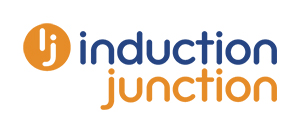Being digital learning brokers, we spend a lot of time researching e-learning providers. Here are 5 examples of helpful pricing plans for ready to go e-learning content that will help you manage your training budget and be kind to cash-flow.
1. Pay just once and buy the content outright
That’s right, you read correctly. Why would just buying the content outright be budget kind? Well, the cost-effectiveness does depend on the amount of learners you have, the cost of the content and the likelihood that it will be repeatedly used for inductions, staff role changes, refreshers etc. Once this due diligence is done then budgeting and paying upfront once rather than getting into an annual licence arrangement means that your business owns the content and won’t ever have to budget for it again. The more learners access it, the more cost effective it gets!
If affordability is an issue – use your negotiating powers to organise a staggered payment plan OR ask your friendly broker if they can have that conversation for you.
2. A flexible but defined licence
Option 1 is all very well if you know exactly what content you want and it will remain the same. If you’re looking for a wider range then a couple of options available. Some e-learning providers will allow content-only purchases. The licence may specify the number of learners, scope of content available and/or time-frame in which it must be used so you’ll need to be clear on this beforehand. Others may offer a site licence without a time restriction but for a specified number of learners using a certain piece of content or limited to a certain number of courses per user i.e. 50 people can access up to 5 courses per year.
Either way you are only buying what you need. There may be discounts for buying in bulk but check that the licence only goes live when the course is activated to prevent licences going to waste.
3. An unlimited licence
These are usually annually renewable and involve pricing based on the number of users accessing one or more libraries of content. Sometimes priced in sliding scale bands of numbers of users, the upfront payment means that it doesn’t matter whether one learner accesses 1 course or 10 courses from the library within that time period (usually 1 year), there will be no further charges. It is easy to calculate annual budgets using the provider’s formula and, unlike option 2, with the renewal date being the 12 month point you avoid running out of licences during the year and leaving learners unable to access courses that may suddenly need.
The key here is looking for libraries which cover the bulk, if not all, the content you may use. Some may allow you to customise courses to make them more business relevant or offer further discount for taking deals over multiple years.
4. Pay As You Go
For small business this still remains a good way to maintain control, by simply only paying for the content at the point of purchase. There are no ownership, contract or licence restrictions to deal with. At the risk of sounding obvious, a realistic calculation of how much you may to use throughout the year will be helpful. Although it’s unlikely the best price will be available for buying just one or two courses at a time, the flexibility to be able to stall purchasing until the cash-flow can stand it, may out-weigh this.
Exercise caution, set and prioritise the budget as costs can escalate. Card payment may be required upfront for small amounts of courses and there will be ongoing admin time required to source, order, authorise card expenditure, make payment, allocate logins and chase certificates and completions etc.
5. Monthly payment in arrears through a broker
Smarter small businesses will look at options for credit terms. This option is also contract free and involves paying monthly in arrears upon an invoice with agreed payment terms which will help cash-flow. If the small amount of courses needed won’t trigger a discount it is definitely worth speaking to your friendly broker. They are most likely buying on behalf of other customers too, have already secured discounts and can be more generous with their margins, even for just a handful of courses. Another bonus is that you could purchase from different providers but only have one supplier source.
A broker can also give advice on different providers, types of content available and may even be able to help with the admin, sourcing, ordering, login allocation and other tasks.
Depending on the relationship you have with them they may event support the odd technical issue out of hours. This is really useful if you are a small team.
At Induction Junction, we impartially connect businesses with all these types of e-learning provider, as well as those offering learning management, recording and transfer systems and digital content development.



